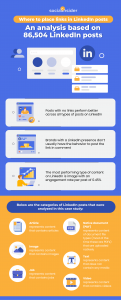Ten points to consider before you buy a LMS for your startup
For any startup, understanding the concept of Learning Management System and selecting the best one among the hundreds of options available can be a very daunting task. Businesses may even doubt its necessity and wonder if their investment in it is of benefit or not. If this is what bothers you, then reading this post will wipe away all your confusions.
As you traverse along the article, you will find a brief introduction of LMS, its benefits, and a list of 10 crucial things you must consider before you decide on purchasing one. Hope you will have a great read!
What is a learning management system?
Abbreviated as LMS, a learning management system is used to design, manage, and distribute online training materials to your target audience. It is a full-fledged software that lets you create courses from scratch or upload an existing curriculum.
Who is using LMS and why?
From global organizations to small businesses and government offices to corporate structures, almost every platform is using an LMS to deliver eLearning courses. The primary purpose with which most companies incorporate this software is to develop interactive employee training programs that help to improve knowledge retention and productivity in the workforce. Moreover, it stands to be a highly cost-effective replacement for brick and mortar learning system.
Ten things to consider before buying an LMS:
1. Understand what your startup needs:
To get your hands on a suitable and effective LMS, it is necessary that you first assess your organization’s requirements. You must question yourself in regards to the purpose of purchasing an LMS, the complexity of the content you wish to upgrade, and whether or not you possess adequate financial resources. This evaluation will also help you to decide between choosing a web-based LMS and a self-hosted one.
Once you complete this step, it is time to check the following LMS software features.
2. User-friendly interface:
Two types of users access an LMS, i.e., administrators and learners. The task of administrators is to create, customize, and deliver courses, while learners are your target audiences. Therefore, regardless of the user, the LMS you choose should have an attractive and easy-to-use interface.
3. Hassle-free integration:
Opt for an LMS that can be integrated with your organization’s existing computer systems and software with the least efforts possible. According to a recent study, for about one-third of the users, easy and quick LMS integration is quite a big challenge. So whichever brand you may go with, make sure that it is capable of getting along with at least the common industry software like API, WebHooks, TinCan API, etc.
4. Mobile-friendly features:
Mobile or smartphone users are rapidly increasing over the past few years. Hence, it is crucial for your LMS to have a responsive design that will not be a hindrance to the employees who use mobile devices to access their course materials. In addition to smooth integration, around 21% of companies say it is challenging to find this feature in learning management systems.
5. Access to product roadmap:
A product roadmap helps you to evaluate the ability of an LMS to stay on par with the ever-changing eLearning trends. It is necessary that you check the current features of the brand and inquire about their future development plans to have a better analysis of the software.
After you check on the LMS features, here is what you should do next:
6. Search through various vendors:
Every vendor you come across will claim to provide the best LMS ever. However, this is not what exists in reality. Hence, a smart approach will be to research various well-known providers and their peculiar features, as discussed above, before you make a move.
7. Go through the pricing scheme:
There are several factors such as the number of active/registered users, administrators, features, and extent of usage; that have a significant impact on the price tag of an LMS. While you do your research on quotes from different companies, always keep an eye on what basis the providers have set up their scheme. Doing so will help you stay safe from faulty services that charge hefty amounts but deliver negligible features.
8. Assess customer support quality:
In circumstances where your software has issues and refuses to work correctly, having an excellent customer support department that responds to your queries in as little time as possible is an immense blessing. Hence, always be mindful of ticking off this essential factor in judging the quality of a Learning Management Software.
9. Go through reviews:
After you are aware of the factors mentioned above, begin surfing online for customer feedbacks. Sieve through various platforms like social media or websites, gather all the negative/positive responses about the LMS vendors of your interest and then proceed with the next step.
10. Take a test:
Last but not the least, testing your LMS features, will be your ultimate decision maker. By the time you reach here, you must have shortlisted a few providers. So ask them for sample version of their software and run it for a few days. Analyze its functionalities and figure out if it contains what you need or not. Once you are satisfied, shoot in to purchase it for your startup.
Final note:
Studies reveal that about 99% of companies benefited by using an LMS for eLearning. This very fact is a clear giveaway of how your investments for the software can never go wrong. However, in the initial stages of your business, searching for a suitable LMS can seem very troublesome. Nevertheless, once you focus on these ten critical considerations, it will become easier for you to evaluate your necessities and make a choice likewise.
About The Author:

Kamy Anderson is an ed-tech enthusiast with a passion for writing on emerging technologies in the areas of corporate training and education. He is an expert in learning management system & eLearning authoring tools – currently associated with ProProfs training Maker.
Spread your word about your business and publish about your products through our website, use the following form to contact us:
(123)
Report Post





